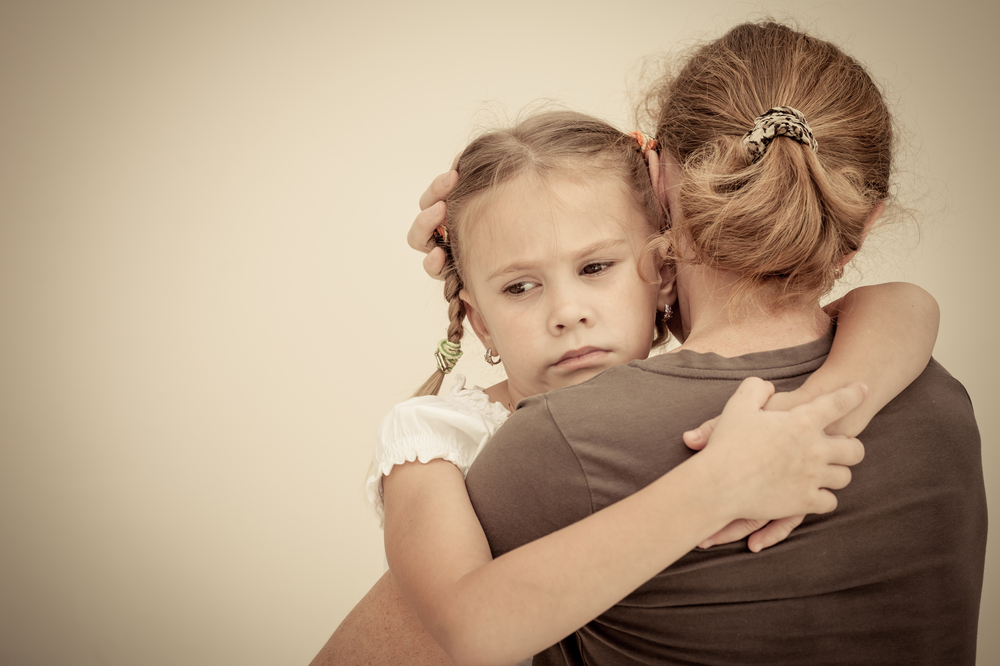

Last Updated on February 25, 2022
It’s been over two weeks since the CDC recommended guidelines for social distancing, and most schools have moved to distance learning.
New restrictions.
New routines.
Physical isolation from friends and extended family.
And there’s no clear end-date in sight. Bill Gates recently shared it likely will not be until Fall 2021 when a sense of ‘normalcy’ resumes.
Times of uncertainty and change can bring out varying emotional states from your child.
Ones that might be more intense or you’ve never seen your child express.
As a parent, you’re a role model for your child. How you react and handle stressful situations also affects how your child responds to these situations.
With our parenting skills tips, you can manage your child’s varying emotions during social distancing. Included are solutions you can implement and activities to help your child keep a positive mindset.
Maybe your child seemed okay during their first week of learning from home.
Sure, they complained a little about the way you’re helping them with math problems…
Then, they started complaining that there’s no good food in the house…
And now, the days continue to pass with increasing uncertainty of when social distancing guidelines will lift.
Your child’s mood likely changes each day, and the way that you react and handle different emotional states is important.
Here are some recommendations on things you can say and do to help your child:
There’s a strong chance that your child is confused by the social distancing guidelines and effects of COVID-19. Be sure to give your child a clear explanation as to what is happening and avoid any details that might worry or scare them. Also, be sure to correct any misinformation. Your child is likely in contact with their friends, so you want to make sure your child isn’t spreading confusion or inaccurate information to others.
To keep things positive, also reassure your child that many people are working hard to keep your family and other families safe. It’s important to take the time to recognize these people too. Give thanks and appreciation for healthcare and essential business workers.

Help your child express their worries and concerns in a safe place. The National Child Traumatic Stress Network suggests creating a ‘Worry Box.’ You can take an old shoebox and have your child write down their feelings throughout the day on pieces of paper. Then, take the time to look over the pieces of paper with your child to discuss their worries. The idea is to create an open discussion and work together to find positive solutions.
Is your child showing outbursts because of anger or frustration?
First, let your child let off some steam. Recreational activities and exercise are a great outlet.
After your child calms down a little, sit down and talk about their feelings. Discuss alternative ways that they can express themselves.
Ultimately, you shouldn’t let your child become overwhelmed with their feelings.
Create a safe space for your child to express and explain how they feel. If your child feels sad, then allow them to be sad, then come up with ideas or things to do the next time they begin to feel that way.
(“I understand you feel sad and miss your friends. How about we set up a weekly Skype call so that you can talk to them?”)
How you manage your child’s emotions helps the way that they react and convey their feelings during social distancing.
It’s important to find ways to reduce potential outbursts or changes in behavior from happening in the first place.
One of the most important things is to ensure that you’re establishing and keeping a routine.
Why?
Because kids crave routines.
It gives predictability, structure, and a sense of security.
Think of how rocky things are right now.
Your child no longer goes to school, which gave them a structure for learning and provided social interactions with friends and classmates.
After school clubs, classes, sports, and other activities?
All canceled.
No more dance class.
No more coding.
No more baseball.
It’s unclear when these in-person activities will definitely resume, but you can still provide structure and stability to your child’s schedule.
First, consider the organization of their weekdays.
Set up a schedule so that they know when and how much time to devote to specific classes and activities.

Math from 9:00 – 9:45, social studies from 9:45 – 10:30, outside activity from 10:30 – 11:30, reading from 11:30 – 12:15… and so on.
You can learn more and see recommendations for setting a routine from HealthyChildren.org.
(And, if looking to establish a routine for learning math, Thinkster Math can also help! Your child works with a dedicated math tutor, who creates a hyper-personalized learning plan for your child. As part of the learning plan, your child develops organizational skills as they learn how to manage their time and productivity through Thinkster assignments!)
You should also create activities so that your child has something exciting to look forward to each week.
Once or twice a week, have a special activity planned. This helps your child get through their distance learning and virtual school week. It’s also a great way of getting the whole family involved in a fun activity!
Here are some ideas:
Does your child miss their friends or extended family members? Phone calls are a great way of checking in, but video calls are even more fun. Getting to see each other and interact can help minimize feeling isolated.

In addition to video calls, your child can also create cards or send a letter in the mail. It’s sure to bring a smile to the receiver’s face! Another alternative is to send an e-card! There are a few sites, like Hallmark, that have this option.
Alright, mom or dad… time to get creative! Kids love a bit of a challenge and working towards a reward. If you don’t feel too creative when it comes to clues or riddles, here are some treasure hunt clue ideas that you can use.
And what about prizes? Well, if you don’t have anything around the house at the moment, then you can make it an e-Card! Gift a $10 Amazon or Walmart gift card and let your child pick whatever they want!
Use blankets and sheets to create forts and tents over furniture. Not only do kids find this fun, but it becomes a great place where they can spend quiet time reading.
Many kids love baking and cooking! You can share family recipes or work together to create a new dish. (Plus, you can sneak in some math by having your child work on measurements and fractions!)

Google Arts & Culture is an incredibly cool online resource! You can view high-resolution images of artwork and learn more about famous pieces and museums. Since you can’t take a trip to the museum, take a virtual tour of one instead!
Does your child love to tell silly stories or reenact scenes from their favorite show or movie? Well, make a day of it! Spend time creating backgrounds and costumes, then have your child work on a script. They can reenact their favorite show or create something entirely new and unique! It’s a great way to ignite the imagination and creativity skills! (And don’t forget to whip out your phone and film it too!)
Instead of movie night, get the whole family engaged and giggling! There are numerous karaoke apps that you can download. Or, just go to YouTube and search for the karaoke version of a song! Your child can also change into costumes or grab props to really get silly with it!
How we react to stressful situations varies and is completely unique.
With no clear end to social distancing and distance learning in sight, your child might be growing more frustrated with each passing day.
React and manage your child’s emotions carefully during these next few weeks. Setting a routine and creating fun activities can also help in creating stability.
How has your child reacted to distance learning? Are they settling into a routine? Leave a comment!


